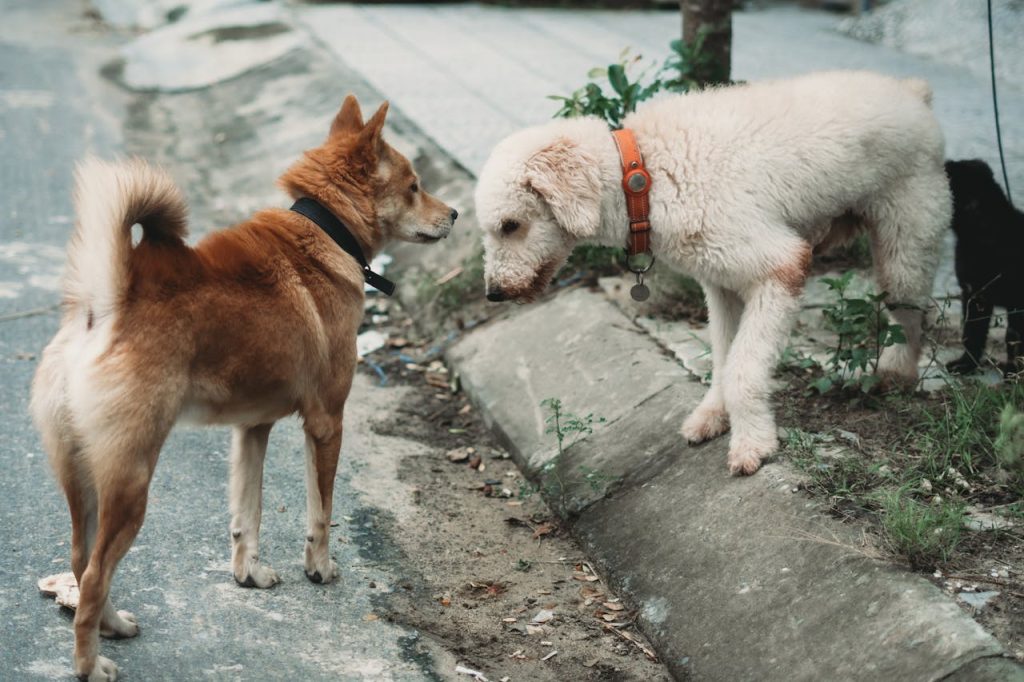Buckwheat is a gluten-free pseudocereal, high in protein, fiber, and essential amino acids. It contains minerals like magnesium, copper, and manganese. When feeding dogs, buckwheat should be cooked and served plain, as it supports digestion and provides nutritional benefits without the risks associated with gluten-containing grains.
In this post, we’ll see whether you can feed your dog buckwheat, what are its benefits, harmful effects and most importantly, things to know (facts) about buckwheat. Additionally, we would also take a look at the nutritional value and the proper way to feed dogs, buckwheat. Finally, we will answer the most important questions about this topic and share the final verdict.
But, firstly – let’s see, can dogs eat buckwheat?

Table of Contents
ToggleCan Dogs Eat Buckwheat Safely?
Yes. Dogs can eat buckwheat safely in small amounts, about 1-2 tablespoons for small dogs or up to 1/4 cup for larger dogs. It should be cooked and served plain without any seasonings. Buckwheat is a gluten-free pseudocereal, rich in protein, fiber, and essential minerals. It supports digestion and provides essential nutrients, but should be fed in moderation to avoid digestive upset.
Benefits of Feeding Your Dog Buckwheat (4 Benefits)
Buckwheat is beneficial to dogs. Here is a list of 4 benefits of buckwheat for dogs:
- Gluten-Free: Buckwheat is naturally gluten-free, making it an excellent option for dogs with gluten sensitivities or allergies, providing a safe alternative to wheat-based grains.
- High in Fiber: The fiber content in buckwheat aids in regulating digestion, preventing constipation, and promoting regular bowel movements in dogs.
- Rich in Protein: Buckwheat is a good source of plant-based protein, essential for maintaining and building strong muscles in dogs.
- Contains Essential Minerals: Buckwheat provides important minerals like magnesium, copper, and manganese, which are crucial for various bodily functions, including bone health and enzyme production in dogs.
Harmful Effects of Feeding Your Dog Buckwheat (3 Harms)
Buckwheat can be harmful to dogs if not fed properly. Here is a list of 3 harmful effects of buckwheat for dogs:
- Digestive Upset: Feeding too much buckwheat can lead to digestive problems such as bloating, gas, or diarrhea due to its high fiber content.
- Raw Buckwheat Toxicity: Raw buckwheat seeds contain a compound called fagopyrin, which can be toxic and cause photosensitivity or skin irritation in dogs. Always ensure buckwheat is cooked before feeding.
- Allergic Reactions: Although rare, some dogs may develop allergic reactions to buckwheat, resulting in symptoms like itching, swelling, or gastrointestinal distress. Introduce buckwheat gradually and monitor for any adverse effects.
Things to Know About (Facts) about Buckwheat
In this section, we will discuss some facts and things to know about buckwheat.
| Attribute | Description |
|---|---|
| Gluten-Free | Buckwheat is naturally free of gluten, making it safe for dogs with gluten sensitivities or allergies. |
| High Fiber Content | Rich in dietary fiber, buckwheat promotes healthy digestion and regular bowel movements in dogs. |
| Plant-Based Protein | Buckwheat provides a good source of plant-based protein, essential for muscle maintenance and growth. |
| Essential Minerals | Contains important minerals like magnesium, copper, and manganese, supporting overall health in dogs. |
| Low Glycemic Index | Buckwheat has a low glycemic index, helping to regulate blood sugar levels, especially beneficial for diabetic dogs. |
| Antioxidant Properties | Buckwheat contains antioxidants, which help reduce inflammation and protect against oxidative stress in dogs. |
| Fagopyrin Presence | Raw buckwheat contains fagopyrin, a compound that can cause toxicity and photosensitivity in dogs if not cooked. |
Nutritional Value of Buckwheat
In this section, we will discuss the nutritional value of buckwheat.
| Nutrient | Amount per 100g | Unit |
|---|---|---|
| Calories | 343 | kcal |
| Total Fat | 3.4 | g |
| Saturated Fat | 0.7 | g |
| Cholesterol | 0 | mg |
| Sodium | 1 | mg |
| Total Carbohydrates | 71.5 | g |
| Dietary Fiber | 10 | g |
| Sugars | 0.85 | g |
| Protein | 13.25 | g |
| Calcium | 18 | mg |
| Iron | 2.2 | mg |
| Magnesium | 231 | mg |
| Potassium | 460 | mg |
How to Feed Dogs Buckwheat?
Here we will explain in 4 proper steps how to properly feed your dog buckwheat:
- Cook the Buckwheat: Boil the buckwheat in water until it is fully cooked and soft. Do not add any seasonings, salt, or oils.
- Cool Before Serving: Allow the cooked buckwheat to cool completely before feeding it to your dog.
- Mix with Regular Food: Start by mixing a small amount, such as 1-2 tablespoons, into your dog’s regular food. Gradually increase the amount if your dog tolerates it well.
- Serve in Moderation: Monitor your dog’s response and serve buckwheat in moderation, based on your dog’s size and dietary needs.
Things to Take Care of (Precautions) Before Feeding Your Dog Buckwheat:
- Avoid Raw Buckwheat: Always cook buckwheat before serving, as raw buckwheat can be toxic to dogs.
- Monitor for Allergies: Introduce buckwheat gradually and watch for any signs of allergic reactions, such as itching or gastrointestinal discomfort.
- Feed in Moderation: Limit the amount of buckwheat to prevent digestive upset due to its high fiber content.
- Ensure Balanced Diet: Do not rely on buckwheat as a primary food source; ensure your dog’s diet is balanced with a variety of nutrients.

Can Dogs Eat Alternative Forms of Buckwheat?
In this section, we will discuss if dogs can eat alternative forms of buckwheat such as buckwheat flour, cooked buckwheat and more.
Can Dogs Eat Raw Buckwheat?
No. Dogs should not eat raw buckwheat. It can contain fagopyrin, a compound that may cause toxicity. Always cook buckwheat before feeding to eliminate this risk. Raw buckwheat offers no significant benefits and can cause digestive issues and other health concerns.
Can Dogs Eat Cooked Buckwheat?
Yes. Dogs can eat cooked buckwheat in small amounts, about 1-2 tablespoons for small dogs or up to 1/4 cup for larger dogs. It should be plain and unseasoned. Cooked buckwheat is gluten-free, high in fiber, and provides essential minerals, supporting digestion and overall health.
Can Dogs Eat Buckwheat Flour?
Yes. Dogs can eat buckwheat flour when used in homemade dog treats. Ensure the flour is plain and free from additives. Buckwheat flour is gluten-free and rich in protein and fiber, making it a healthy alternative to wheat flour for dogs with gluten sensitivities.
Can Dogs Eat Buckwheat Pancakes?
It depends. Dogs can eat buckwheat pancakes if they are made plain, without any harmful ingredients like sugar, butter, or syrup. Small, unseasoned portions are safe. Buckwheat pancakes can provide a gluten-free treat, but overconsumption may lead to weight gain due to additional ingredients.
Can Dogs Eat Buckwheat Noodles?
It depends. Dogs can eat plain buckwheat noodles in small quantities, ensuring they are free from seasonings or sauces. Buckwheat noodles are gluten-free and offer similar nutritional benefits as cooked buckwheat, including fiber and protein, but should be fed in moderation to avoid digestive issues.
What are the Nuts and Seeds other than Buckwheat that Dogs Can Eat?
Here is a list of other nuts that your dog can eat:
- Almonds
- Cashews
- Peanuts (unsalted)
- Hazelnuts
- Pecans
- Walnuts
Frequently Asked Questions (FAQs)
In this section, we will discuss some frequently asked questions regarding buckwheat and feeding them to dogs.
What makes buckwheat a good choice for dogs with sensitive stomachs?
Buckwheat is a gluten-free pseudocereal that is easy to digest and rich in fiber, which helps regulate digestion and prevents gastrointestinal discomfort. Its low allergenic potential and high nutritional value make it a suitable option for dogs with sensitive stomachs.
Is buckwheat safe for dogs with gluten allergies?
Yes. Buckwheat is naturally gluten-free, making it a safe alternative for dogs with gluten allergies or sensitivities. It can be used in dog food or treats, providing a nutritious and easily digestible option without the risks associated with gluten-containing grains.
How does buckwheat compare to quinoa for dogs?
Buckwheat and quinoa are both gluten-free and high in protein, but quinoa contains more complete amino acids, making it a slightly superior protein source. However, buckwheat is also rich in fiber and easier to digest for some dogs, making it a strong alternative for those with sensitive stomachs.
What are the best ways to incorporate buckwheat into a dog’s diet?
- Cooked Buckwheat: Mix small amounts into regular dog food.
- Buckwheat Flour: Use as a base in homemade dog treats.
- Buckwheat Pancakes: Serve plain, without added sugars or fats.
- Buckwheat Noodles: Offer plain, unseasoned as an occasional treat.
Conclusion
In conclusion, buckwheat, a gluten-free pseudocereal rich in protein, fiber, and essential minerals, is safe and beneficial for dogs when served cooked and plain. Its easily digestible properties make it a suitable alternative to gluten-containing grains. Incorporating buckwheat into your dog’s diet can support overall health, confirming its safety and nutritional value.



